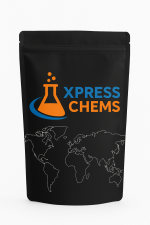Buy Twilight Molly – USA & Europe
1. What is Twilight Molly?
Twilight Molly is a branded form of MDMA (3,4-Methylenedioxymethamphetamine), commonly known as Molly. It is a synthetic psychoactive substance with stimulant and mild hallucinogenic properties. Twilight Molly is known for producing energizing effects, enhanced sensory perception, and increased feelings of empathy and emotional warmth. It is used primarily in research exploring neurochemical effects on serotonin, dopamine, and norepinephrine systems.
2. Chemical Composition & Structure of Twilight Molly
As a variant of MDMA, Twilight Molly shares the molecular formula C11H15NO2. Its chemical structure consists of a methylenedioxyphenyl ring attached to an amphetamine backbone. It usually presents as a crystalline powder or capsule form suitable for research purposes.
3. Research Applications of Twilight Molly
Researchers use Twilight Molly (MDMA) to investigate its entactogenic and stimulant effects on the central nervous system. It is vital in studying neurotransmitter release, receptor interactions, and has potential therapeutic applications in treatment-resistant PTSD and other psychiatric disorders.
4. Recommended Laboratory Handling & Safety Guidelines
Handling Twilight Molly requires personal protective equipment such as gloves, lab coat, and eye protection. Experimental work should be conducted in fume hoods or well-ventilated labs. Accurate dosing and contamination control are essential for reliable research outcomes.
5. Hazard Warnings & Risk Statements (GHS Classification)
Twilight Molly is classified as hazardous with potential risks, including cardiovascular stress, hyperthermia, and neurotoxicity. High doses can lead to serotonin syndrome. Follow local regulations and safety data sheets for handling and storage.
6. Compatibility with Other Reagents or Substances
Avoid combination with MAO inhibitors or other serotonergic drugs to prevent toxic effects. Alcohol-based solvents are typically compatible but must be handled under controlled conditions.
7. Emergency Protocols for Accidental Exposure
In case of skin or eye exposure, rinse with plenty of water. If inhaled, move to fresh air and seek medical advice if symptoms develop. Immediate medical attention is critical in case of ingestion or severe exposure.
8. Storage Stability & Shelf Life Monitoring
Store Twilight Molly in airtight containers away from light, moisture, and heat. When properly stored, it maintains stability for 1-2 years. Regular inspection for discoloration or odor is recommended.
9. Can Researchers Purchase Twilight Molly Without a License?
Yes, researchers can purchase Twilight Molly as a research chemical without a license but must verify local laws before ordering.
10. Is It Legal to Order Twilight Molly Online in My Country?
Regulations vary by jurisdiction. It is the client’s responsibility to ensure compliance with local laws on possession and use.
11. Is Twilight Molly Considered Safe for Laboratory Use?
Twilight Molly is safe for laboratory research when handled with proper safety measures. Its potent pharmacology requires cautious dosing and adherence to protocols.
12. Special Considerations for Researchers with Medical Conditions
Researchers with heart, neurological, or psychiatric conditions should exercise caution or avoid handling. Medical advice is recommended.
13. Allergen Exposure Risks When Handling Twilight Molly
Use protective gear due to possible allergic or irritant reactions.
14. Can Twilight Molly Be Used in Combination with Other Research Materials?
Use caution combining with serotonergic agents or other psychoactive substances to prevent adverse effects.
15. Can Pregnant Researchers Handle Twilight Molly?
Avoid during pregnancy or lactation due to unknown risks.
16. Proper Handling Protocols for Best Experimental Consistency
Use precise dosing equipment, prepare fresh samples, and maintain contamination-free labs to optimize results.
17. Optimizing Research Output with Twilight Molly
Use pharmaceutical-grade purity with controlled assays for reproducible and reliable data.
18. Reported Results and Efficacy in Experimental Settings
MDMA demonstrates reliable entactogenic effects by modulating serotonin and dopamine, valuable for neuropsychiatric research.
19. Known Adverse Reactions or Lab Incidents
Risks include hyperthermia, serotonin syndrome, and cardiovascular strain with improper dose or handling.
20. What To Do in Case of Severe Exposure or Contamination
Seek emergency medical help immediately, provide responders with chemical details, and follow established decontamination protocols.
21. Can Alcohol-Based Solvents Be Used with Twilight Molly?
Yes, common alcohol solvents like ethanol are compatible under controlled conditions.
22. What If I Skip a Scheduled Measurement or Test Cycle?
Record and report missed measurements. Adjust experimental timelines to safeguard data integrity.
23. Maximum Recommended Duration of Experimental Storage or Use
Shelf life usually lasts 1 to 2 years with proper storage conditions.
24. Stability After Discontinuation of Testing
Store properly or dispose of deteriorated samples per hazardous waste regulations.
25. Is There Risk of Dependency or Sensitization?
Dependency risk is moderate; repeated exposure can cause sensitization. Use controlled lab practices.
26. Long-Term Storage Recommendations for Twilight Molly
Use airtight containers with desiccants in cool, dark environments to preserve product integrity.
27. Alternative Research Chemicals with Similar Properties
Alternatives include MDA, MDEA, and other substituted amphetamines with empathogenic and stimulant profiles.













Reviews
There are no reviews yet.